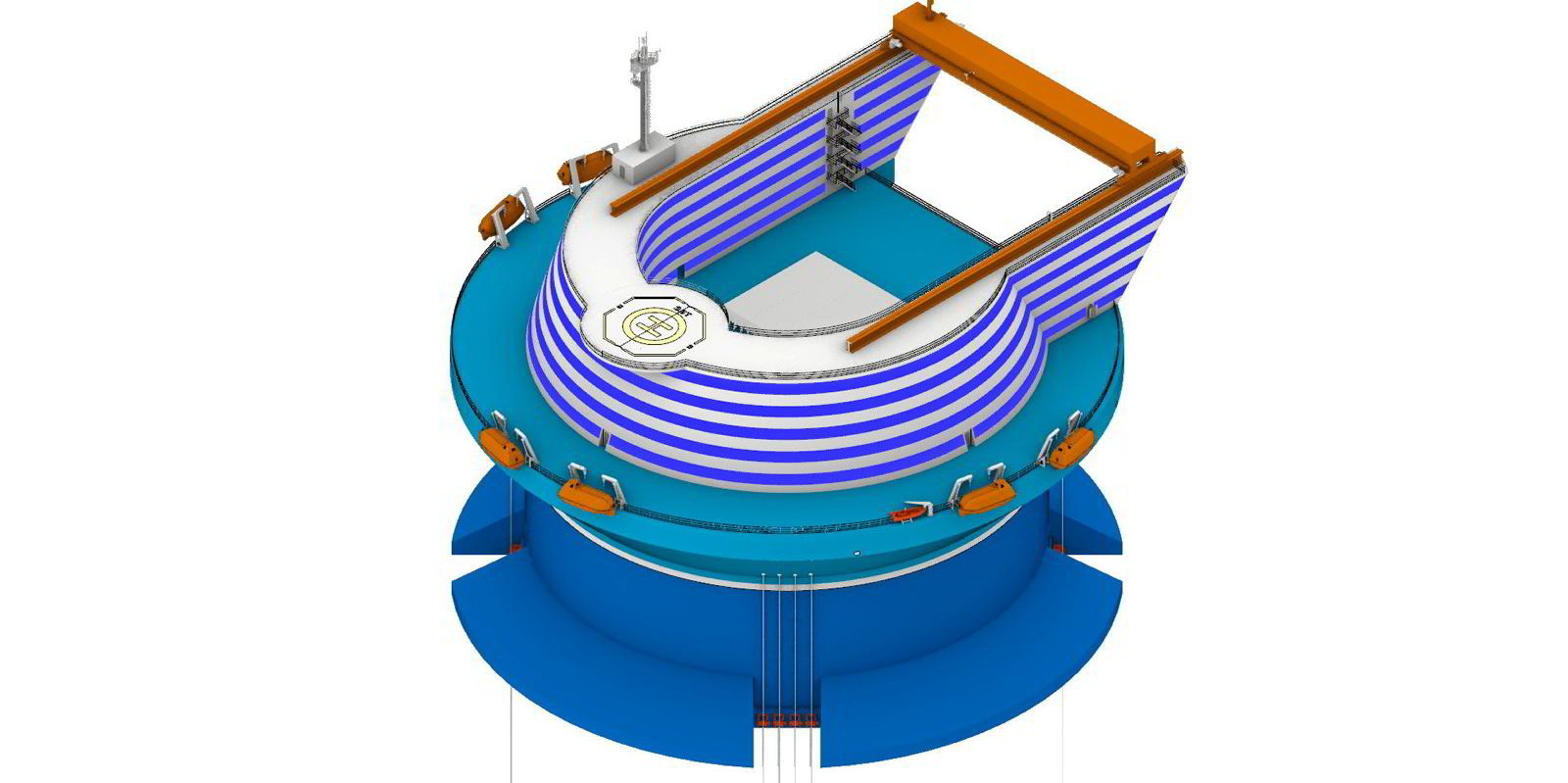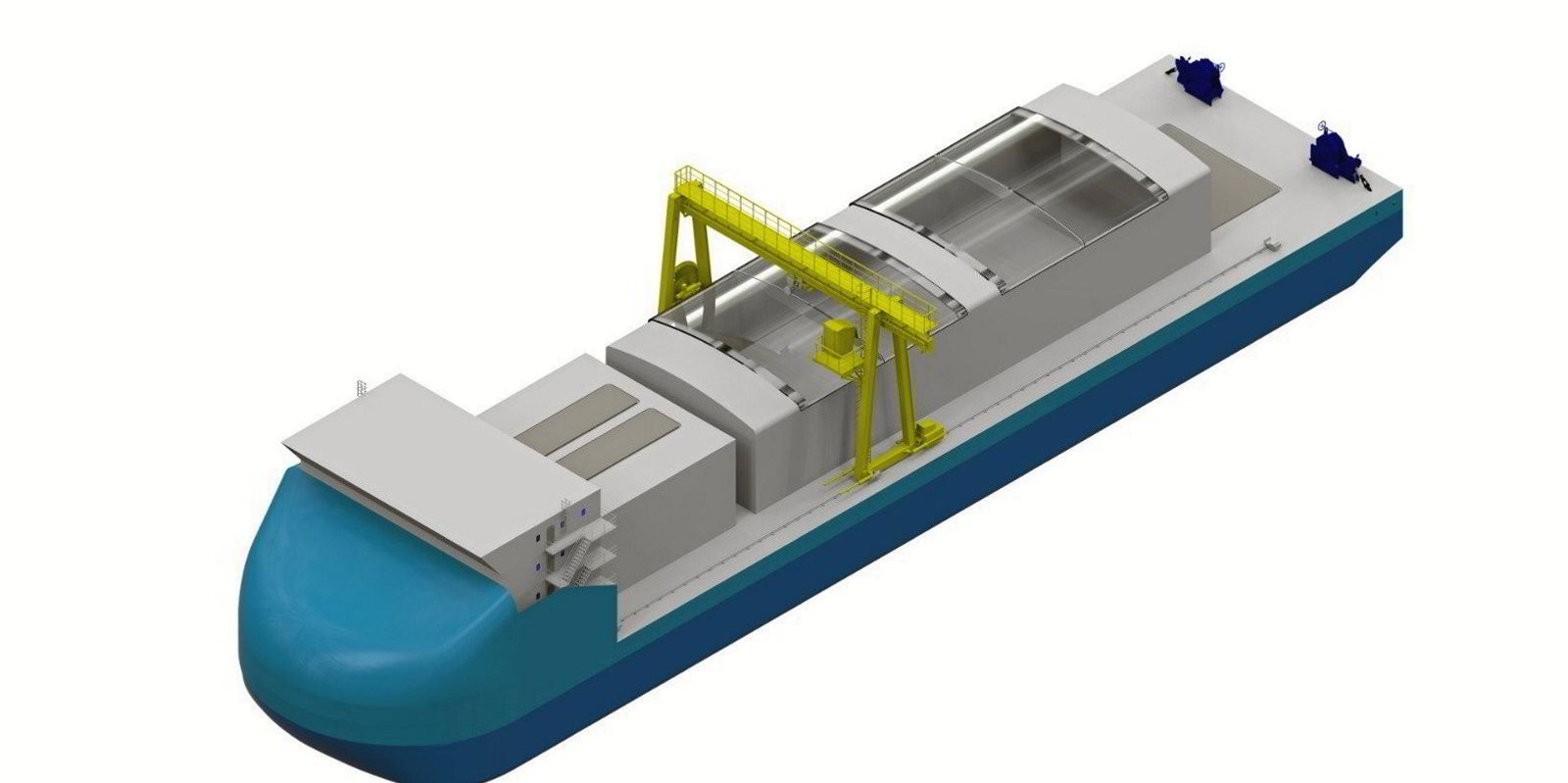Combining nuclear power with ammonia could seem one of the least attractive alternative marine fuel proposals from a safety perspective, but a UK-based technology company is suggesting just that.
Core Power, which was set up in 2018 to develop advanced reactor technologies for maritime industries, is working on plans for floating nuclear power plants that can provide energy for offshore green ammonia refineries.
Positioned at either end of a green corridor, it reckons they can provide low-cost alternative ships’ fuel.
Chief executive Mikal Boe admits nuclear power has been “like sex and politics: not something one should talk about round the dinner table”.
But he believes nuclear’s safety problems need no longer be an issue with molten salt reactors, while other alternative fuels such as green methanol could be produced if ammonia is deemed too toxic.
Producing green ammonia from 100% clean hydrogen and nitrogen is energy intensive and requires reliable low-cost electricity. It also helps if the fuel can be produced where it is needed.
At a launch demonstration in July, Core Power said a single facility in the US Gulf could produce 1.3m tonnes of green ammonia at a cost that would compete with low-sulphur bunker fuel plus carbon taxes.
Green corridors were proposed at the COP26 climate talks in late 2021 as a way for governments and maritime operators to work together to decarbonise specific shipping routes.
Floating refineries at both ends of an Atlantic corridor would provide sufficient fuel to supply ships trading on the route with plenty left over for inland and coastal markets, the company said.
Core Power’s design is for a 90-metre diameter cylindrical “spar type” hull fitted with four molten salt reactors to produce 1.2 GW of electricity round the clock.
Molten salt reactors do not suffer meltdown if they lose coolant as the fuel and coolant is combined. They also operate at ambient pressure, unlike conventional nuclear plants where most accidents have involved loss of coolant.
The idea of molten salt reactors is not new. Experimental reactors were developed in the 1950s and 1960s but did not catch on as there was little demand while major powers pushed ahead with conventional reactors — at least in part because they wanted fuel for nuclear weapons.
Critics have previously claimed materials do not exist for molten salt reactor components to be able to withstand being exposed to chemically corrosive hot salts while being bombarded by radioactive particles.
However, Boe told TradeWinds in an interview that the technology has moved on.
Core Power is involved in a consortium with TerraPower, a company set up by Bill Gates, which has been developing a new design of molten chloride fast reactor (MCFR) since 2013, when private companies in the US were allowed to start working on reactors.
Other partners are US electricity utility Southern Company and French nuclear fuel life-cycles group Orano.
A $430m programme aims to test a small experimental MCFR reactor to prove the concepts by 2025. It is funded to the tune of $170m by the US government with the partners financing the rest.
Core Power, which is privately owned by shipping and maritime-related industrial groups, has invested $75m, while TerraPower has just completed a third financing round for $750m to fund its nuclear energy activities, which include other project areas.
Almost concurrently, President Joe Biden’s climate bill included a $700m funding boost for the next generation of reactors, including a second type being developed by TerraPower, after Russia’s invasion of Ukraine pushed the US to find alternatives to Russian imports of high-assay low-enriched uranium.

A commercial-scale demonstrator MCFR, capable of 70 MW of electrical power, requiring about another $2bn of investment would follow the experimental unit.
The demonstrator could be in operation by 2029 to 2030, Boe said and could be a floating facility.
Nuclear vessel regulations adopted by the International Maritime Organization in 1981 under the International Convention for the Safety of Life at Sea — Solas — need to be rewritten but could overlap closely with rules under consideration at the International Atomic Energy Agency.
With regulations in place, a commercial floating power plant is to be deployed around 2033, added Boe.
Boe, who has both shipping and nuclear industry backgrounds, said the MCFR is expected to overcome corrosion issues by using very pure salts and having an internal environment free of hydrogen and oxygen. Corrosion is caused by impurities in salts coming into contact with air, he said.
Molten salt reactors operate at 95% fuel efficiency compared with a conventional reactor at about 1%, he said. They can be kept running at full power while fuel is topped up, whereas spent fuel has to be removed as radioactive waste from a conventional reactor about every 18 months.
“It’s a bit like driving your car for two miles, then emptying the tank and then filling it again,” Boe said of past reactors. In contrast, fuel can be taken out at the end of a molten salt reactor’s life and used to fill a new reactor, creating much less waste.
Construction in shipyards and maritime transport to destination sites are key components of the MCFR project, said Boe, as reactors “are way too heavy to move around on trucks and rail cars”.
Coastal manufacture and deployment would lower costs and ease end-of-life decommissioning, Boe added, whereas producing green fuels from weather-dependent renewables, like wind, could struggle with intermittency issues.
Public perception about nuclear safety still needs to shift, but Boe said fears are diminishing.
“When I first started in 2016 doing this, the vast majority of people I spoke to thought I was either mad or stupid, but that’s changed.
“We struggle to find people who are genuinely against this idea. We find that the majority are enthusiastic. They think it is quite clever,” Boe added.






